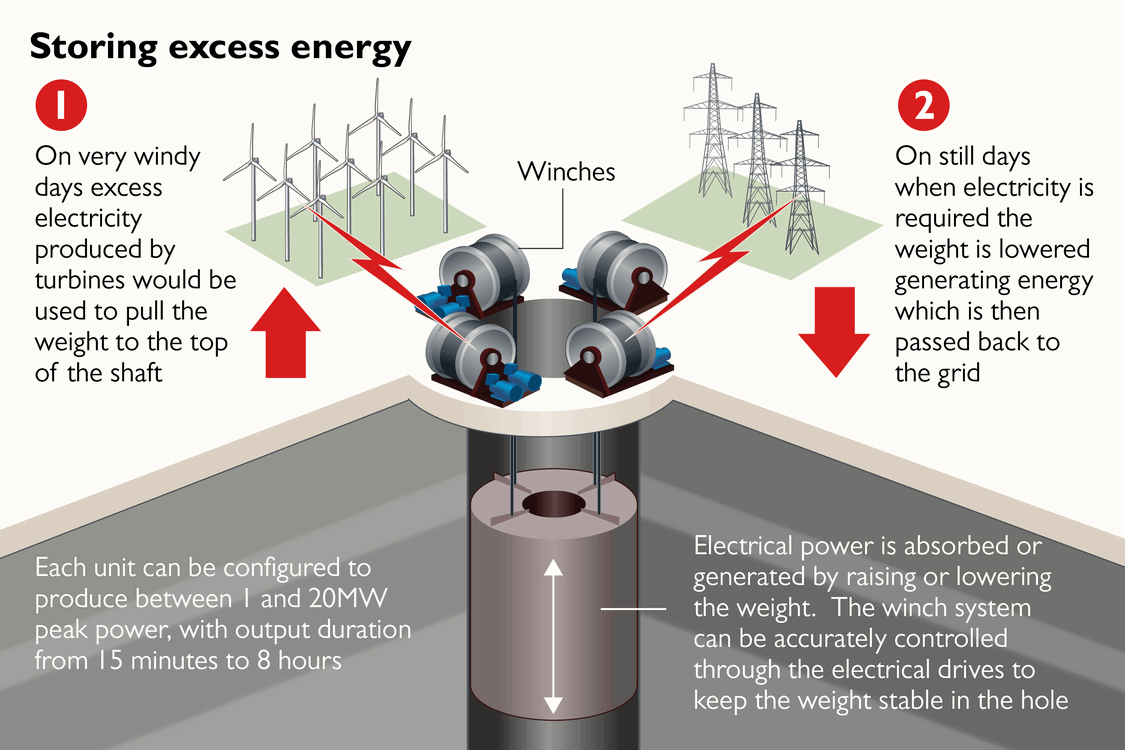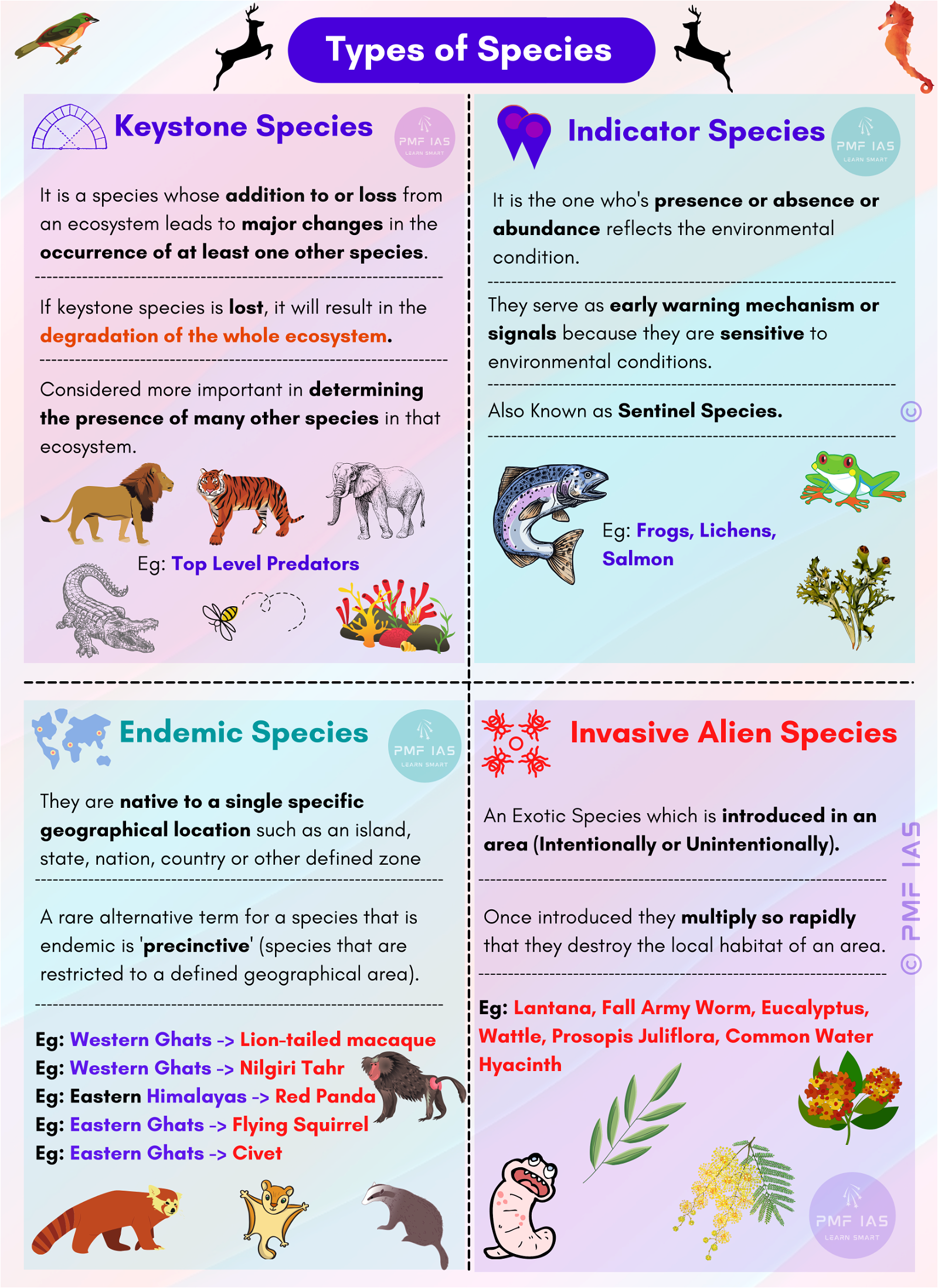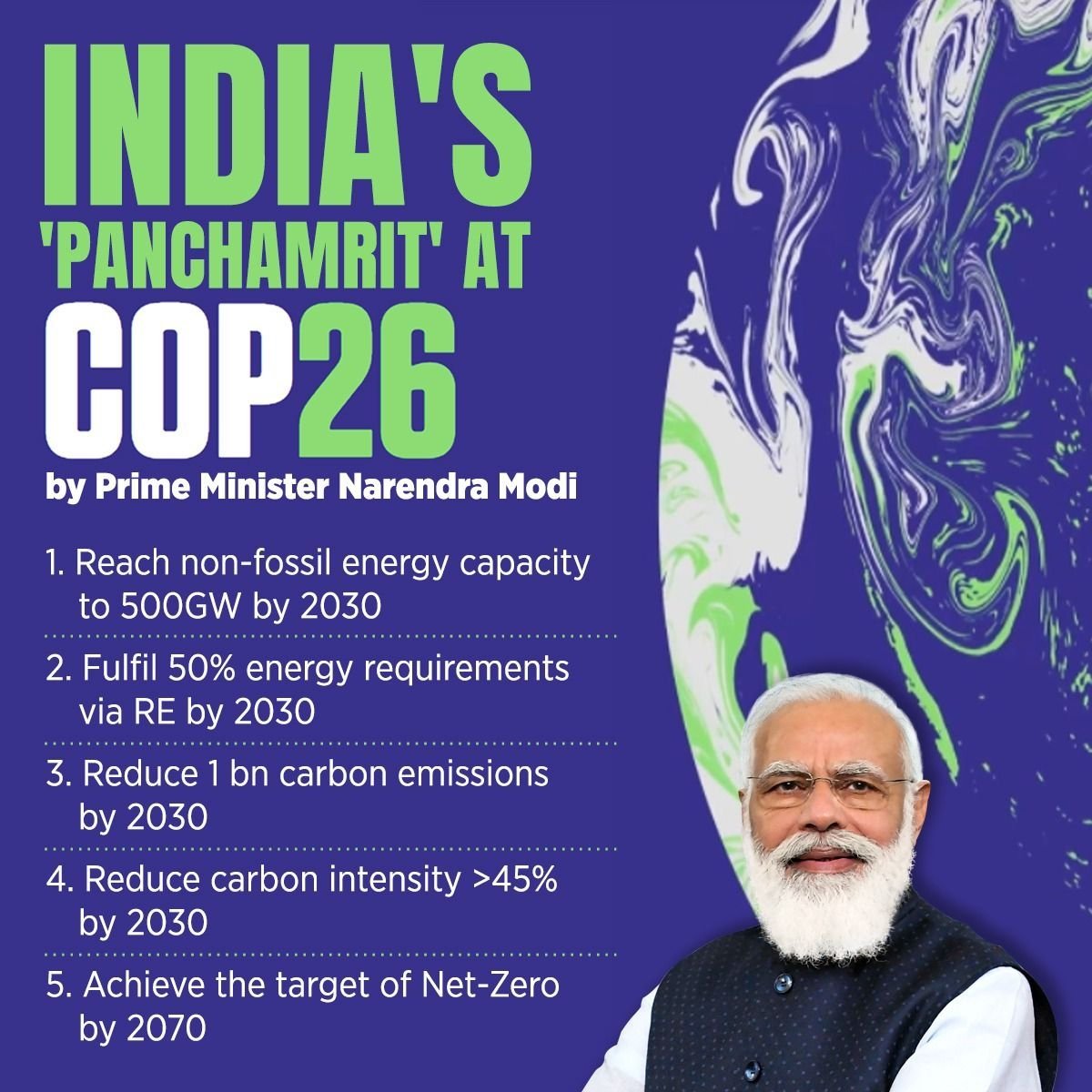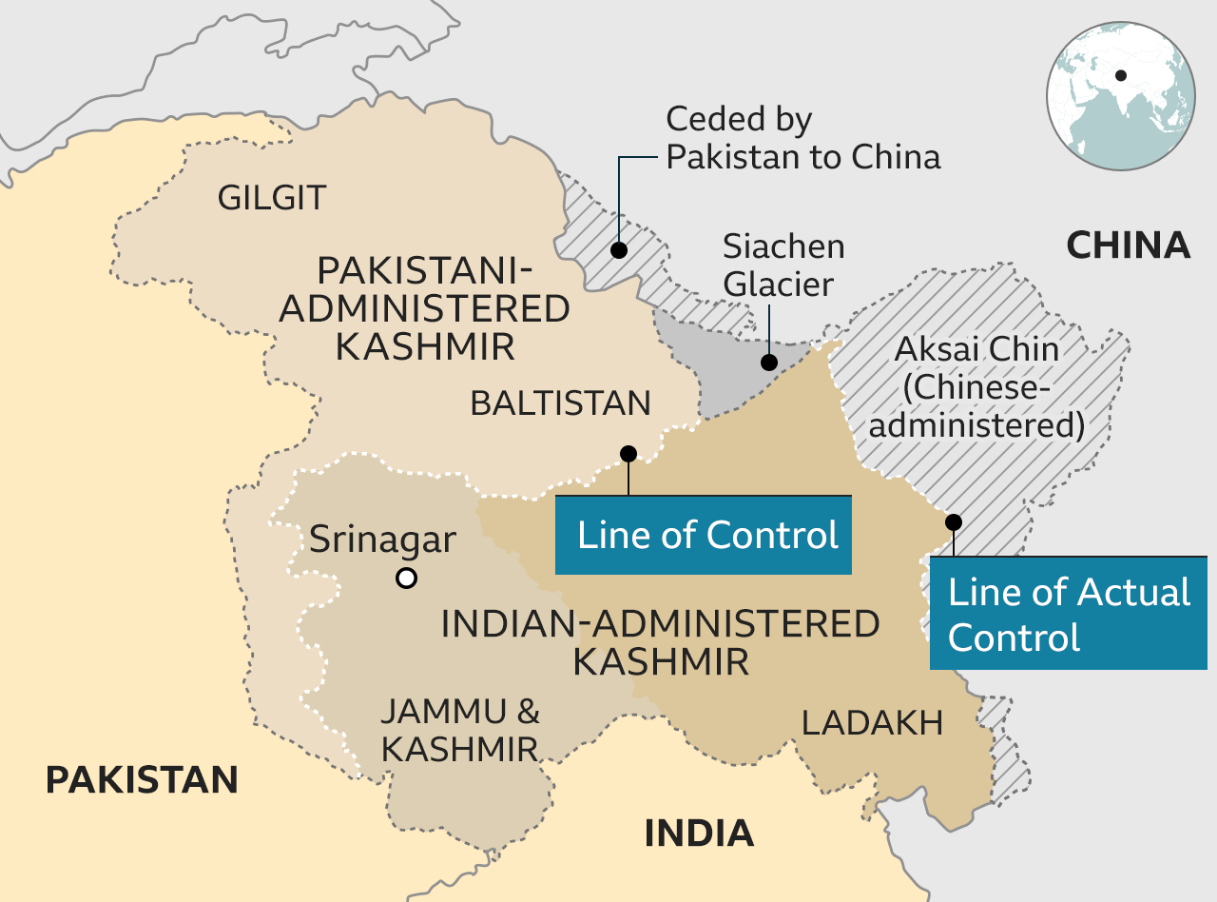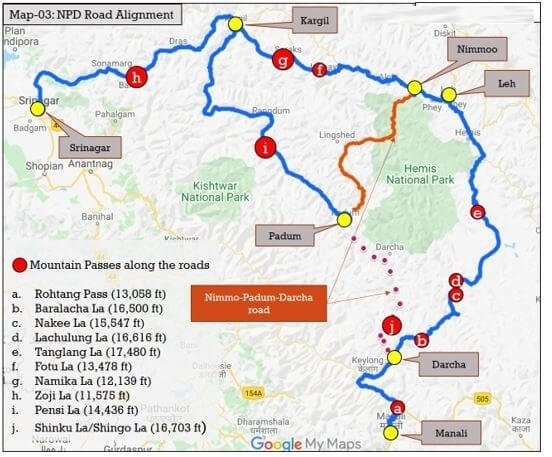
Current Affairs for UPSC Civil Services Exam – March 31, 2024
Subscribers of "Current Affairs" course can Download Daily Current Affairs in PDF/DOC
Subscribe to Never Miss an Important Update! Assured Discounts on New Products!
Must Join PMF IAS Telegram Channel & PMF IAS History Telegram Channel
{GS2 – Governance – Initiatives} MEITY’s Advisory to AI Industry
- Context (TH I IE): The Ministry of Electronics and Information Technology (MeitY) issued an advisory to the Artificial Intelligence industry.
- After facing backlash, the government clarified that its advisory on generative artificial intelligence (AI) services and elections was directed towards “significant” platforms and not start-ups.
- The advisory instructed large tech platforms, including Google, to submit an action taken-cum-status report to the Ministry within 15 days.
Key Takeaways from the Advisory
Permission must be for AI models still in the testing stage
- Explicit permission from the GoI is required for the use of an under-tested or unreliable AI model/LLM/ generative AI, software, or algorithm and its availability to users on the Indian Internet.
- They should be deployed only after appropriately labelling the possible and inherent fallibility or unreliability of the output generated.
- This part of the advisory was slammed by the startup founders, who described it as a “bad move” and “demotivating”.
Large language model (LLM)
Machine Learning
|
AI platforms can’t threaten the poll process, spread misinformation
- The platforms have to ensure that AI models do not permit users to publish/host any unlawful content as defined under Rule 3(1) (b) of the IT rules.
- Platforms must ensure that their “computer resources,” including AI model / LLM/Generative AI/software or algorithm, do not permit any bias “or threaten the integrity of the electoral process.
Generative Artificial Intelligence
How Does Generative AI Work?
|
‘Permanent unique identifier’ for AI-generated content
- Synthetic content that can be used to spread misinformation or deepfake, “it is advised that such information is labelled or embedded with a permanent unique metadata or identifier.”
- This metadata or identifier can be used to identify the “creator or first originator of such misinformation or deep fake,”.
- Platforms should use a “consent popup” mechanism to inform users about possible inaccuracies in AI-generated output.
Users ‘dealing’ with unlawful information can be punished
- AI platforms to communicate to the users that “dealing” with unlawful information can lead to suspension from the platform and may also incur punishment under applicable laws.
Non-compliance can lead to penal consequences
- Non-compliance with the provisions of the IT Act and/or IT Rules would result in potential penal consequences for intermediaries, platforms, or users when identified.
- The prosecution can be under the IT Act and several other statutes of the criminal code.
An Analysis of the Government Advisory
Lack of Statutory Power
- The legal status of MEITY’s advisories is a concern in understanding the government’s regulatory authority and its implications for stakeholders.
- Unlike regulatory bodies like the Securities and Exchange Board of India (SEBI), MEITY lacks clear statutory powers explicitly granting it the authority to issue binding directives or advisories.
- This absence of a specific legislative framework leaves room for interpretation and raises questions about the enforceability of MEITY’s directives.
Lack of Clarity on MEITY’s Power to Issue Advisories
- The IT Act 2000, India’s primary legislation for technology regulation, does not explicitly confer MEITY the power to issue advisories to regulate emerging technologies like AI.
- The IT Act provides provisions for the regulation of electronic records, digital signatures, and cybersecurity; it does not delineate MEITY’s authority to issue directives on AI governance.
Lack of Clear Definitions and Citations
- The term “advisory” itself lacks a precise definition under the IT Act or other relevant legislation.
- This ambiguity allows MEITY to issue directives that carry the weight of official recommendations without clear legal backing.
- Stakeholders, including technology companies, users, and legal experts, are uncertain about the legal implications of non-compliance with MEITY’s advisories.
- MEITY’s advisories often lack explicit citations of legal authority or references to specific legislative provisions.
- This absence of legal grounding contributes to the perception of MEITY’s regulatory actions as arbitrary and potentially overreaching.
Compliance Issue
- In the absence of clear penalties or enforcement mechanisms compliance becomes a matter of discretion rather than legal obligation.
- This further raises concerns about accountability and due process in technology regulation.
Opportunistic Transparency and Rapid Policy Making
- These advisories are triggered by media events and issued hastily, without thorough assessment or stakeholder consultation.
- The lack of transparency, with only partial information released to the public, further undermines the legitimacy of MEITY’s regulatory actions.
Undefined Terms and Ministerial Clarifications
- The advisory introduces vague terms such as “bias prevention” and proposes a licensing regime for AI models without clear definitions or legal framework.
- This lack of clarity contributes to uncertainty among stakeholders and undermines the rule of law.
Ineffective Advisory Regulation and Decline in Administrative Standards
- The advisory regulation represents a decline in administrative standards, bypassing formal legislative processes and stakeholder consultations.
- The expansion of IT Rules 2021 to regulate various aspects of digital content further exemplifies regulatory overreach.
- Moreover, the influence of social media metrics on policy decisions reflects a departure from deliberative governance processes.
Curtailing Freedom of Expression
- MEITY’s regulatory actions, including advisories on AI governance and social media content moderation, risk curtailing freedom of expression online.
- This can lead to self-censorship among individuals and organisations, fearing reprisals for expressing dissenting views or challenging government policies.
- This stifling of free speech undermines democratic discourse and pluralism in the digital public sphere.
Expansion of Surveillance and Control
- Digital authoritarianism is often characterised by the expansion of state surveillance and control over online activities.
- MEITY’s proposals for AI governance, may facilitate increased government surveillance and censorship of online content.
Threats to Innovation and Technological Development
- MEITY’s advisory and ambiguity in legal status pose significant challenges to innovation and technological development.
- The uncertainty surrounding compliance requirements and enforcement mechanisms discourages investment and innovation in emerging technologies like AI.
- The burdensome regulatory requirements may stifle entrepreneurship and impede the growth of India’s technology sector.
Role of Gen AI on Elections in 2024
- In 2024, elections will be held in over 50 countries, including India, the US, the UK, Indonesia, Russia, Taiwan, and South Africa.
- Like in previous elections, one of the biggest challenges voters will face will be the prevalence of fake news, especially as AI technology makes it easier to create and disseminate.
How is AI Linked with the Electoral Landscape?
Campaign Strategy and Targeting
- AI algorithms can analyse vast amounts of data about voters, including demographics, social media activity, and past voting behaviour, to tailor messages and more effectively target specific voter groups.
Predictive Analytics
- AI-powered predictive analytics can forecast election outcomes by analysing various factors such as polling data, economic indicators, and sentiment analysis from social media.
- This can help parties allocate resources strategically and focus on key battleground areas.
Voter Engagement
- AI chatbots can engage with voters on social media platforms, answering questions, providing information about candidates and policies, and even encouraging voter turnout.
- This can enhance voter engagement and participation in the electoral process.
Security and Integrity
- AI-powered tools can be employed to detect and prevent election fraud, including voter suppression, tampering with electronic voting systems, and the spread of disinformation.
- AI algorithms can help ensure the integrity of the electoral process by analysing patterns and anomalies in data.
Regulation and Oversight
- Governments and election authorities can use AI to monitor and regulate political advertising, identify violations of campaign finance laws, and ensure compliance with electoral regulations.
- AI-powered tools can help enforce transparency and accountability in the electoral process.
- The Bihar Election Commission (BEC) tied up with AI firm Staqu to use video analytics with optical character recognition (OCR) to analyse CCTV footage during the panchayat elections.
- This enabled the BEC to achieve complete transparency and eliminate any chances of manipulation.
Concerns about Deploying AI for Electoral Purposes?
Manipulation of Electoral Behavior
- AI models, particularly Generative AI and AGI, can be used to spread disinformation, create deep fake elections, and inundate voters with highly personalised propaganda.
- Deepfake Videos of opponents can be created to tarnish their image.
- The term “Deep Fake Elections” refers to the use of AI software to create convincing fake videos, audio, and other content that can deceive voters and influence their decisions.
- One prominent example highlighting the potential dangers of such manipulation is the Cambridge Analytica scandal.
- Cambridge Analytica exploited Facebook data to create targeted political advertisements and influence voter behaviour during the 2016 US presidential election.
Messaging and Propaganda
- AI tools can be trained to translate into regional languages, which candidates can use for Microtargeting in their campaigns.
|
Spreading Disinformation
- The World Economic Forum 2024 Global Risk Report ranked AI-derived misinformation and its potential for societal polarisation as one of its top 10 risks over the next two years.
- AI models would be far superior to the bots and automated social media accounts that are now baseline tools for spreading disinformation.
- The risks are compounded by social media companies such as Facebook and Twitter significantly cutting their fact-checking and election integrity teams.
Inaccuracies and Unreliability
- AI models, including AGI, are not infallible and can produce inaccuracies and inconsistencies.
- There has been public wrath over Google AI models for portraying persons and personalities in a malefic manner, mistakenly or otherwise. These reflect well the dangers of ‘runaway’ AI.
|
Ethical Concerns
- The use of AI in elections raises ethical questions about privacy, transparency, and fairness.
- AI algorithms may inadvertently perpetuate biases present in training data, leading to unfair treatment or discrimination against certain groups of voters.
- Moreover, the lack of transparency in AI decision-making processes can erode public trust and confidence in electoral outcomes.
- Parties with better resources can better utilise AI in comparison to small and regional parties with lesser resources, which may disrupt the level playing field in the elections.
Regulatory Challenges
- Regulating the use of AI in electoral campaigns presents significant challenges due to the rapid pace of technological advancements and the global nature of online platforms.
- Governments and election authorities struggle to keep pace with evolving AI techniques and may lack the necessary expertise to regulate AI-driven electoral activities effectively.
- The primary statutes that could potentially tackle fake news spread using deepfakes are The India Penal Code, 1860 (or the Bharatiya Nyaya Sanhita, 2023 in due course) Information Technology Act, 2000; and the Information Technology (Intermediary Guidelines and Digital Media Ethics Code) Rules, 2021.
- However, a specific law doesn’t exist that addresses only AI and deepfake technology and targets the individual who creates it.
{GS2 – Polity – IC – FRs} Phone Tapping
- Context (IE): Senior police officials have been arrested by Hyderabad Police in connection with the case of phone tapping and destroying specific computer systems and official data.
- Phone tapping or cell phone tracking/tracing is an activity where a user’s phone calls and other activities are tracked using different software.
How are phones tapped in India?
- On fixed-line phones, mechanical exchanges linked circuits to route the audio signal from the call.
- When exchanges went digital, tapping was done through a computer.
- Today, in the era of mobile phones, authorities request the service provider, which is bound by law, to record the conversations on the given number and provide these in real-time.
Who can Tap Phones?
- State Level: In the states, police have the power to tap phones.
- Central Level: At the Centre, ten agencies are authorised to do so.
- Intelligence Bureau,
- Central Bureau of Investigation (CBI),
- Enforcement Directorate,
- Narcotics Control Bureau,
- Central Board of Direct Taxes,
- Directorate of Revenue Intelligence,
- National Investigation Agency,
- Research and Analysis Wing (R&AW),
- Directorate of Signal Intelligence,
- Delhi Police Commissioner.
Laws governing Phone Tapping in India
The Indian Telegraph Act, 1885
- The British Raj used it to quell rebellions and consolidate info.
- According to Section 5(2) of the Act, the Centre or states can tap phones in the interest of public safety or the event of a public emergency.
- The competent authority must record reasons for tapping in writing.
- Tapping by any other agency would be considered illegal.
- The order can be issued if they are satisfied it is necessary in the interest of
- Public safety,
- Sovereignty and integrity of India,
- The security of the State,
- Friendly relations with foreign States or
- Public order or
- To prevent incitement to the commission of an offence.
Exception
- Press messages intended to be published in India of correspondents accredited to the GoI or a State Government shall not be intercepted or detained unless their transmission has been prohibited.
Authorising Phone Tapping
- Phone tapping is authorised by Rule 419A of the Indian Telegraph (Amendment) Rules, 2007.
- In the case of GoI, the order can be issued by an order made by the Secretary to the GoI in the Ministry of Home Affairs.
- In the case of a State Government, The Secretary to the State Government is in charge of the Home Department.
In Emergency Situations
- An order may be issued by an officer not below the rank of a Joint Secretary of India, whom the Union Home Secretary or the State Home Secretary has authorised.
- If it is not feasible to get prior directions, a call can be intercepted with the previous approval of the authorised officers not below the rank of Inspector General of Police at the state level.
- The order must be communicated to the competent authority within three days, and the authority must approve or disapprove it within seven working days.
- If the confirmation from the competent authority is not received within the stipulated seven days, such interception shall cease.
Checking the misuse
- Using as Last Resort: The law is clear that interception must be ordered only if there is no other way of getting the information.
- Rule 419A mentions that while issuing directions under sub-rule (1)
- The officer shall consider the possibility of acquiring the necessary information by other means and
- Shall be issued only when it is not possible to acquire the information by any other reasonable means.
- Rule 419A mentions that while issuing directions under sub-rule (1)
- Period of enforcement: The directions for interception remain in force unless revoked earlier, for a period not exceeding 60 days. They may be renewed, but not beyond a total of 180 days.
- Review committee: Any order issued by the competent authority has to contain reasons, and a copy is to be forwarded to a review committee within seven working days.
- At the Centre, the committee is headed by the Cabinet Secretary, with the Law and Telecom Secretaries as members.
- In states, it is headed by the Chief Secretary, with the Law and Home Secretaries as members.
- The committee is expected to meet at least once in two months to review all interception requests.
- Destruction of records: Under the rules, records pertaining to such directions shall be destroyed every six months unless these are, or are likely to be, required for functional requirements.
- Service providers, too, are required to destroy records pertaining to directions for interception within two months of discontinuance of the interception.
- Section 26 (b) of the Indian Telegraphic Act: It provides for the imprisonment of 3 years for persons held for unlawful interception.
- An individual can also be prosecuted for authorised interception of telephone data but explicitly sharing the same.
- When a person becomes aware of illicit phone interception, an FIR can be lodged at the nearest Police Station.
SC Judgements on Phone Tapping
PUCL vs UOI, 1997
- CBI reported mass-scale illegal telephone tapping in its 1991 report.
- S.C Observations-
- “The right to hold a telephone conversation in the privacy of one’s home or office without interference can certainly be claimed as the right to privacy.”
- “Telephone conversation is an important facet of man’s private life.
- In 1997, after the PUCL case, the GoI amended the Indian Telegraph Rules, 1951, and inserted Rule 491-A to regulate phone tapping.
- It also laid down guidelines for phone tapping.
Right To Privacy In India
|
Rayala M. Bhuvaneswari vs Nagaphanender Rayala, 2008
- The AP High Court held that the act of tapping by the husband into the conversation of his wife with others was illegal, and it violated the right to privacy of the wife.
{GS3 – Envi – CC Impact} Sea Surface Temperature
- Context (IE): According to the Copernicus Climate Change Service (C3S), the average global sea surface temperature (SST)—the temperature of the water at the ocean surface—for February 2024 stood at 21.06 degrees Celsius, the highest ever in a dataset that goes back to 1979.

Factors Responsible for Warming Oceans
- GHG Emissions: Since the Industrial Revolution, human activities like burning fossil fuels have released significant levels of greenhouse gases (GHGs) into the atmosphere, trapping heat and causing global warming.
- Global Warming: Rising GHGs have increased the average global temperature by at least 1.2°C above pre-industrial levels, leading to warmer oceans.
- Heat Absorption: About 90% of excess heat trapped by GHGs has been absorbed by the oceans, steadily warming them.
- El Niño: This weather pattern, marked by abnormal warming of Pacific Ocean waters, contributes to ocean warming and rising global temperatures.
- Decreased Dust Cover: Due to weaker winds, reduced dust from the Sahara Desert means less shading of the Atlantic Ocean, allowing more sunlight to penetrate and warm it.
Why are rising sea surface temperatures a cause of worry?
- Ocean Stratification: Warmer oceans cause an increase in ocean stratification, where less dense, warmer, and nutrient-poor water layers sit atop denser, colder, and nutrient-rich water layers.
- Disrupted Mixing: Natural mixing processes, such as ocean currents, wind, and tides, usually blend these layers. However, rising temperatures hinder this mixing.
- Reduced Absorption of Carbon Dioxide and Oxygen: Hindered mixing results in decreased absorption of carbon dioxide from the atmosphere and inadequate mixing of oxygen with cooler ocean waters below, endangering marine life survival.
- Nutrient Transport Hindered: Nutrients struggle to ascend from the depths of the ocean to its surface.
- Threat to Phytoplankton Population: This poses a threat to phytoplankton, crucial single-celled plants at the base of many marine food webs, as they thrive on the ocean surface.
- Cascade Effect on Marine Ecosystems: Phytoplankton serve as food for zooplankton, which various marine animals like crabs, fish, and sea stars then consume. Hence, a decline in phytoplankton population could trigger a collapse of aquatic ecosystems.
- Marine Heat Waves (MHWs): Warmer ocean temperatures lead to MHWs, defined as when the sea surface temperature of a specific region rises 3-4°C above the average for at least five consecutive days.
- Increased Frequency and Intensity: Between 1982 and 2016, MHWs doubled in frequency and intensified, as reported by a 2021 study by the UN’s Intergovernmental Panel on Climate Change (IPCC).
- Devastating Impact on Marine Ecosystems: MHWs contribute to coral bleaching, reducing coral reproduction and increasing susceptibility to life-threatening diseases.
- Disruption of Migration Patterns: MHWs also disrupt the migration patterns of aquatic animals.
- Association with More Frequent and Intense Storms: Higher ocean temperatures are linked to more frequent and severe storms, such as hurricanes and cyclones, according to several studies.
- Impact of Warmer Temperatures on Storms: Elevated temperatures increase evaporation rates and heat transfer from oceans to the air.
- Amplified Storm Intensity: Storms crossing hot oceans accumulate more water vapour and heat, resulting in stronger winds, heavier rainfall, and increased flooding upon landfall.
- Heightened Devastation: This amplifies the devastation caused by storms, posing increased risks to human populations.
{GS3 – Envi – Conservation} Sustainable Buildings
- Context (TH): Addressing energy inefficiency in residential buildings is important.
Need
- The building sector, a major energy consumer, accounts for over 33% of India’s electricity usage, contributing to environmental degradation and climate change.
- India expects a huge rise in cooling needs due to economic growth, urbanisation, heat islands, and climate change. This stresses the importance of comfort without using too much energy.
- The India Cooling Action Plan forecasts an eight-fold increase in cooling demand between 2017 and 2037.
Initiatives undertaken
- Eco-Niwas Samhita (ENS).
- ENS introduces Residential Envelope Transmittance Value (RETV) to measure heat transfer in buildings. Lower RETV means cooler indoors and less energy used.
- The Residential Energy Conservation Building Code.
Challenges
- Current building trends focus on fast, energy-intensive methods with active cooling.
- A study in four hot-climate cities in India found that developers prefer Monolithic concrete (Mivan) for its speed, strength, quality, and scalability, especially in high-rise buildings.
- Over 60% of buildings under construction chose this method.
- However, Autoclaved Aerated Concrete (AAC) blocks consistently had the lowest RETV, making them thermally efficient. Whereas Monolithic concrete has much higher embodied energy compared to AAC, indicating environmental concerns.
- The construction industry’s preference for Mivan raises sustainability concerns due to high carbon emissions and thermal discomfort.
Way forward
- AAC blocks that provide a better balance between embodied energy and construction time compared to red bricks and monolithic concrete should be preferred.
- Collaboration with sustainability experts will help to optimise building design and strategies like orientation and window placement.
- Sustainable construction needs innovative, cost-effective, and durable materials with good thermal performance and climate resilience.
Mivan Technology |
{GS3 – IE – Banking} Co-branded credit cards
- Context (LM): The Reserve Bank of India (RBI) is tightening its scrutiny of the credit card industry. Recently, it asked Federal Bank and South Indian Bank to stop issuing new co-branded credit cards.

- Co-branded credit cards are hybrid credit cards issued by a bank through a tie-up with a brand.
- There are two types: one issued in partnership with retail merchants and the other issued in partnership with fintech companies.
- These cards offer customer benefits in the form of rewards or loyalty points.
- Travel, fuel, and e-commerce are the three major sectors under which co-branded credit cards are issued.
- For instance, ICICI Bank-Amazon pay cards are HDFC Bank-Swiggy cards.
- Typically, co-branded cards have the partners’ logos. However, the co-branded partners must abide by RBI regulations.
{GS3 – IE – Budget} Fiscal deficit
- Context (TH): The Centre’s fiscal deficit widened from ₹11 lakh crore in January to ₹15 lakh crore by the end of February.
- The deficit has jumped from 63.6% to 86.5% of the revised target of ₹17.3 lakh crore within 29 days.
- For 2023-24, the government’s fiscal deficit is estimated at Rs 17.35 lakh crore, or 5.8 percent of the GDP.
- Two factors explain the February deficit increase:
- Increased transfers of ₹2.15 lakh crore to States compared to ₹1.4 lakh crore last year.
- Rise in capital expenditure from ₹47,600 crore in January to ₹84,400 crore.
|
{GS3 – IE – Development} Drop in FDI inflows
- Context (TH): India’s net foreign direct investment (FDI) inflows have decreased by nearly 31% to $25.5 billion in the first ten months of 2023-24.
- The Finance Ministry attributes this decline to a global trend of reduced investments in developing countries.
- Overall, global FDI flows increased by 3% to approximately $1.4 trillion in 2023.
- However, economic uncertainty and higher interest rates led to a 9% decrease in FDI flows to developing nations.
- Reflecting the global trend, Gross FDI inflows to India decreased slightly from $61.7 billion to $59.5 billion between April 2023 and January 2024.
- The decline was primarily due to increased repatriation of investment.
|
Highlights
- According to a UNCTAD report, despite a decrease in FDI inflows, India remains among the top 5 destinations for global greenfield projects.
- Approximately 65% of India’s FDI equity inflows were in sectors such as services, pharmaceuticals, construction, and non-conventional energy.
- The Netherlands, Singapore, Japan, the USA, and Mauritius contributed to around 70% of total FDI equity inflows into India.
- In 2023, global FDI was mainly driven by capital-intensive projects in renewable energy, batteries, and metals sectors.
- However, international investment projects, including greenfield projects and project finance, declined in 2023 due to higher financing costs.
- Cross-border mergers and acquisitions also decreased by 16% in 2023, according to the ministry.
|
{Prelims – In News} J-slab Ballastless Track System
- Context (NDTV): India is using the J-slab ballastless track system for the bullet train project between Mumbai and Ahmedabad for the 1st time.
- The J-slab ballastless track system is a type of railway track used for high-speed trains.
- Unlike traditional ballasted tracks, which rely on gravel or crushed stone (ballast), the J-slab system uses pre-cast concrete slabs.
- These slabs are equipped with fastening devices to secure the rails are then laid directly on an RC (reinforced concrete) bed.
Advantages
- Provides excellent stability and reduces track maintenance.
- Offers a smoother ride for passengers due to its uniform surface.
- Absence of ballast minimizes wear and tear.
{Prelims – In News} Maravakandy Dam
- Context (TH): With fishing temporarily stopped, migratory birds arrive in greater numbers at the Maravakandy Dam in the Nilgiris.
- Maravakandy Dam is located in the Nilgiris District of Tamil Nadu, and is 35 km away from Ooty.
- It was built in 1951 across the stream Aravarihalla, which is a tributary of Sigur River.
- It is the primary water resource for the Moyar hydroelectric powerhouse.
{Prelims – Sci – Bio – Diseases} Multiple Myeloma Blood Cancer
- Context (IND): Multiple Myeloma Awareness Month is observed in March every year.
- Multiple myeloma is a cancer that develops in plasma cells (crucial for a healthy immune system) within the bone marrow.
- Over time, myeloma cells accumulate in the bone marrow, forming tumours in various bones.
- It is called “multiple” because it frequently grows in multiple patches or areas of bone marrow.
- The most common sites include the bones of the spine, skull, pelvis, rib cage, and the areas around the shoulders and hips.
- These tumours can hinder the production of healthy blood cells and weaken the bones.
- Abnormal myeloma proteins released by myeloma cells can impair bodily functions, including kidney function.
- Weakening of bones can lead to bone pain, elevated calcium levels in the blood, and even bone fractures with minimal trauma.
- Symptoms: Fatigue, Bone pain, Kidney issues, persistent lower back pain, frequent infections, or elevated creatinine levels in blood
- It primarily impacts elderly, with an average age at diagnosis of 65 years and above and is more common in males than females.
- Treatment: Incurable in most patients, but long-lasting remissions and a good quality of life can be achieved with proper treatment.
- Recent advancements in myeloma treatment:
- Anti-CD38 targeted therapies (e.g., daratumumab, isatuximab) destroy myeloma cells by targeting CD38 proteins.
- BCMA-CAR T cell immunotherapy genetically modifies T cells to target BCMA proteins on myeloma cells, triggering immune responses.
- Bispecific targeted antibody therapies simultaneously bind myeloma cells and immune cells, enhancing immune-mediated destruction.
{Prelims – Sci – Bio – Diseases} Mumps Resurgence in Kerala
- Context (TH): Mumps has been spreading rapidly in Kerala over the past few months.
- Mumps is an acute viral infection caused by the mumps virus.
- It primarily affects the salivary glands, leading to painful swelling of the parotid glands (located on both sides of the face).
- It primarily affects children and adolescents.
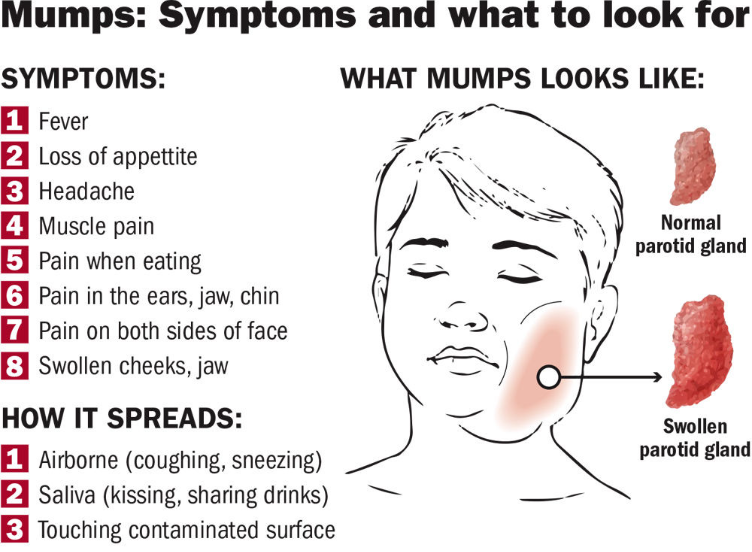
- Symptoms: Fever, headache, and swelling near the jawline.
- Although most cases are self-limiting and resolve within a few weeks, complications such as meningoencephalitis, pancreatitis, and reproductive gland effects can occur.
- The mumps vaccine is not part of India’s Universal Immunisation Programme (UIP) despite being vaccine-preventable because:
- No Mortality Profile: Mumps has low mortality, which influenced its exclusion.
- Poor Documentation: Lack of comprehensive data on clinical cases, complications, and follow-up.
- Published Studies: Insufficient published studies on mumps in India.




![PMF IAS Environment for UPSC 2022-23 [paperback] PMF IAS [Nov 30, 2021]…](https://pmfias.b-cdn.net/wp-content/uploads/2024/04/pmfiasenvironmentforupsc2022-23paperbackpmfiasnov302021.jpg)

